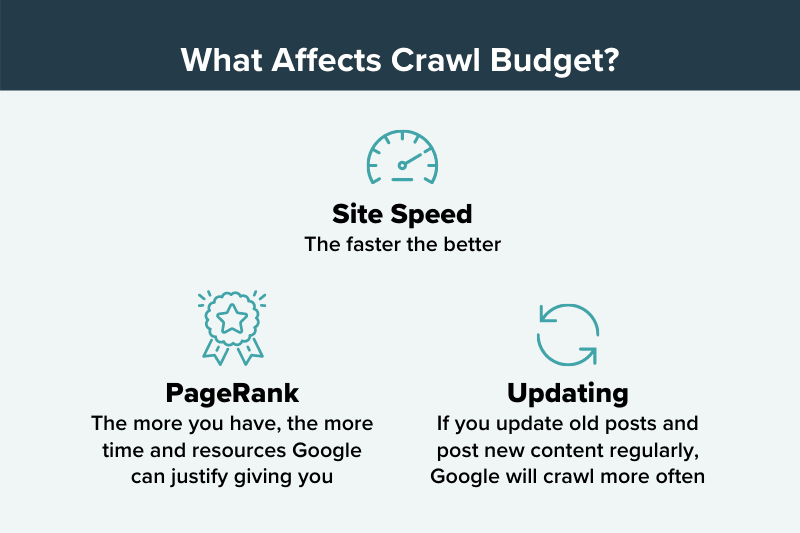Should You Delete Content or Just Stop Linking? An SEO Dilemma


If you’re a new blogger, bookmark this and come back in a few years. But if you’ve been blogging for awhile, you may have already asked yourself this SEO question:
Should you delete content that’s old and/or not doing a lot for you?
Looking for a quick answer? Sorry. We’re going to make you power through a 1,555-word novel because this isn’t thin content we’ll be deleting anytime soon — you’ll get the cleverness of that joke in a second!
In truth, there are differing views on whether you should delete old content and why. But before we reach our verdict, there are some key concepts to understand.
SEO theorists who advocate for you to delete content lean heavily upon the following terms.
Thin content is like a thin argument — a page that provides little unique value to the reader.
Commonly, these are pages such as “hallway” or “doorway” pages, existing primarily to provide links to pages with content, while the page itself doesn’t have unique content. For example, remember when you were going to spend the entire summer creating delicious tomato recipes, so you created a tag and a category page for this content in advance? But then your tomato crop was hardly bumper and you ended up not writing a single post, so that tag and category page have no content?
We could write a whole blog post on this (it wouldn’t be thin, either!) but in short, if a page doesn’t provide direct SEO value to Google, why show it to Google? It’s not going to rank.
But is there any harm in thin content?
Since Google indexes everything on a per-page basis (see our PageRank post), there’s no overall harm to your site from having thin content.
The bigger concern is that it can actually impact the second concern:
The internet is very large, and even Google has finite resources when crawling every site.
This leads to the concept of crawl budget, or how much time Googlebot will spend browsing each of the pages on your site per day, week or month.
Basically, Googlebot has limited time for you and everyone else. Exactly how limited? That will vary by site and based on additional factors:

This is where thin content comes in. If Google finds a lot of it, you have two potentially problematic scenarios on your hands:
After reading all that, you’re probably thinking about all the thin content you need to delete. Which is why our answer to the above questions may surprise you:
No! Don’t do it!
Even Google itself, in the article linked to above, says publishers shouldn’t worry about this. As long as you’re indexing fresh content (e.g. if your latest post is indexed that same day, or that same week if you post infrequently), then you have no issues with crawlability and can likely move on.
Secondly, it’s also important to note that old content isn’t necessarily thin.
If you wrote a post a decade ago, before you knew about SEO, or before you wrote longer/more relevant posts for whatever reason, the older stuff may be shorter, but it likely isn’t thin.
Please remember, thin content doesn’t refer to the page’s length but its value; thin content means that it offers nothing unique to the reader.
Think about the summer of no tomatoes example from above, with the tag page you made for your new category which now houses a link to one whole post with no unique content ever created for it.
That’s thin.
So should you delete that tag/page? Well, 698 words later, allow me to introduce you to a strategy that I’ve used on Mediavine’s own sites with success.
Remember, Google’s crawler works like a spider, following the path of the web. It can only get from one page to the next via internal links.
If you simply stop linking to a page, Google stops crawling and indexing it.
As the old adage goes, if a tree falls in the woods and no one’s there to hear it, does it make a sound? If a webpage isn’t linked to and can’t be crawled, does it still exist? (Yes, but also no.)
Going back to our example earlier, let’s say you have a bunch of tag pages that you never wrote unique content for. You could simply update your theme to stop linking to those tags.
The tag pages you do use? Switch them to a different taxonomy, such as categories.
If that doesn’t work for your overall strategy, simply remove the offending/thin tag from any posts and suddenly nothing will link to it.

Generally, because it’s safer. Again, paraphrasing the old saying: If a webpage has no links to it, does it exist?
In Google’s eyes, no. Not linking to a post has the exact same effect as deleting it.
So why is it better? Wouldn’t deleting said pages “speed up” your site by taking up fewer server resources? And just be faster than thinking all of this through?
As far as any modern database or hosting company is concerned, no. One page on a site will take up very little space with zero impact on your site speed.
There’s no risk involved in the act of not linking to a post or page. Removing links is safe. The dangers of deleting content, on the other hand, do exist.
What if you directly linked to that tag in another post, or unbeknownst to you, someone else on the internet linked to the tag page via a backlink?
If you delete a post without cleaning up the links back to it, you’re potentially wasting PageRank by sending it into the Vast Black Hole of Deletion.
That’s not a real term, although we should probably trademark it. You get the idea — sending PageRank into the void, never to be seen again.
Worse yet, what if the page or post you’re about to delete actually brings in traffic you may not realize it gets?
Our celebrity gossip website, The Hollywood Gossip, regularly sees traffic on posts from 5-10 years ago. A page can be stagnant for years, then all of a sudden take off once a Z-lister finds their way back into the news.
If we deleted the content, we’d lose that potential. Instead, we stopped linking to THG’s oldest content archives, keeping them alive while preserving our link equity and crawl budget.
Google still knows the old stuff is there; THG’s got the traffic on reality television stars from 2011 to prove it. This way, you get the benefits of deletion without any loss of traffic and potential PageRank.
“My SEO guy told me to redirect that deleted content to my homepage or some other content!”
No offense to that SEO guy, but fire that SEO guy.
Kidding. Mostly. Not really.
Redirecting does not fully transfer link equity, even in the best case scenario. Google’s own Matt Cutts has said some PageRank will dissipate or be diluted when doing this.
But more importantly, link equity only transfers through a redirect in the case of a change in URL, or a canonicalization.
For example, let’s say you changed your URL to remove the dates, and therefore, were simply telling Google that you moved a post from one URL to another.
Or let’s say you made your site https, or secure, (please tell me you have, it’s 2021, people), and set up a redirect from the old http:// structure to the new https://.
In those scenarios, you are transferring most of the PageRank, having properly used the redirect to indicate to Google that you moved the content.
If you’re deleting a post and then redirecting the content to anything but where you moved that post’s content, you’re losing the PageRank.
No 301 to the homepage, or even to a related post that isn’t a true replacement, will pass on the PageRank. The robots are too smart.
(Disclaimer: If you’re replacing the content you deleted, then a redirect will work.)
By and large, just remove links to any thin content you believe to be a problem. Don’t delete it.
Of course. If you know there are no links to a post, internally and externally, and it hasn’t ranked on anything in over a year, and thus won’t cause a loss of links or traffic, you can axe it.
But again, what’s the point?
Unless you have the tools and knowledge to understand when it’s safe to delete, it’s generally just better to nix the links to thin content and call it a day.
Or, in the unlikely event that Kim Kardashian’s lawyer wants some salacious rumor taken down, you should probably go ahead and delete that, too.
Bottom line, you’re better off spending the resource of your limited time creating fresh content about Kim’s latest arm candy rather than worrying about deleting old posts about former flames.
Stay up to date with the latest from Mediavine
In today’s digital landscape, advertisers are becoming increasingly selective about where they place their ads. With the growing importance of brand safety, audience engagement and ROI, the quality of a …
 Eric Hochberger
Eric Hochberger
Since the advent of Trellis, Mediavine’s goal was to provide a WordPress framework to meet the needs and pain points of independent publishers. We’ve had the pleasure of working with …
 Amanda Martin
Amanda Martin
To enhance both the visual appeal and functionality of our publishers’ websites, Mediavine is making essential updates to optimize ad density while meeting industry standards and maintaining revenue performance. We’re …